Where, oh where, oh where is Susie?
Where, oh where, oh where is Susie?
Where, oh where, of where is Susie?
Way down yonder in the paw-paw patch.
Chorus:
Picking up paw-paws; put 'em in a basket.
Picking up paw-paws; put 'em in a basket.
Picking up paw-paws;put 'em in a basket.
Way down yonder in the paw-paw patch.
Come along, boys, and let's go find her.
Come along, boys, and let's go find her.
Come along, boys, and let's go find her.
Way down yonder in the paw-paw patch
Mrs. McCoy brought paw-paws to school for us to sample. I remember not being impressed by the taste which was like an over-ripe banana. I wasn’t then, nor am I now, fond of over-ripe bananas, unless they’re baked into banana nut bread or muffins. But I liked the catchy little ditty!
The paw-paw is a fruit with yellow-green skin and soft, yellow-orange flesh with a creamy, custard-like consistency. The taste has been described as a cross between a banana and a mango, and is very sweet.
This is a paw-paw not yet ripe. It’s about four inches long and two inches wide.
Paw-paws also grow in clusters of two or three.
- It’s the largest edible fruit native to the United States and grows wild in 26 states, including Kansas.
- It’s a member of the tropical custard apple family, the only member not found in the tropics.
- The paw-paw has been nicknamed custard apple, poor man’s banana and Indiana banana.
- The small trees are usually found growing along banks of rivers and streams; however, our paw-paw patch is not near a stream.
- Native Americans and early European settlers enjoyed the custardy sweetness.
- The paw-paw is packed with nutritional value: high in protein, antioxidants, vitamins A and C and several essential minerals. I was surprised about the protein; most fruits aren’t known to have high protein content.
This year, I out-smarted those thieving varmints. I picked two paw-paws still a little green and set them on the kitchen counter, covered by a paper towel, for a couple of days to finish ripening.
Here is the inside of a ripe paw-paw.
Our joint consensus was, “Let’s go look for more on our evening walk!” We didn’t expect to find more than a few, if that many, since the season is almost past and our patch is not prolific. But we did find four.

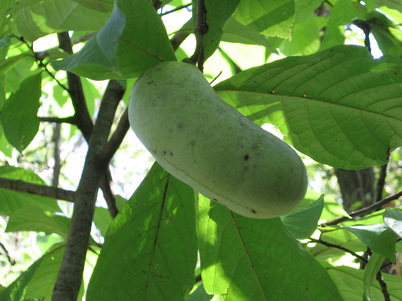
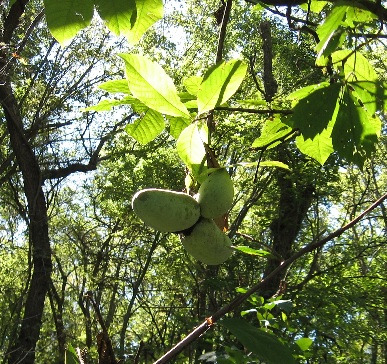
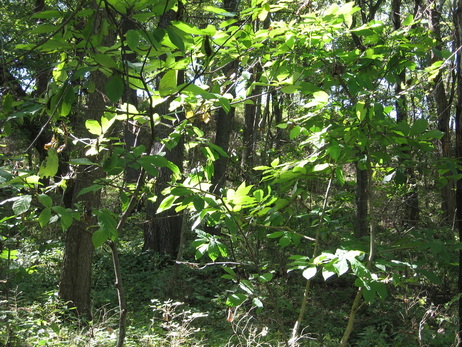
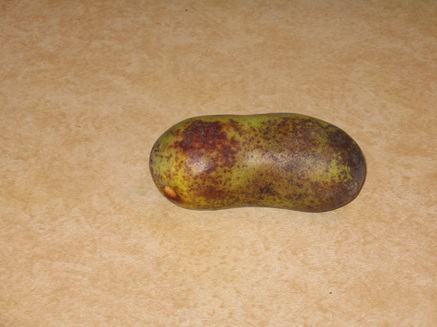
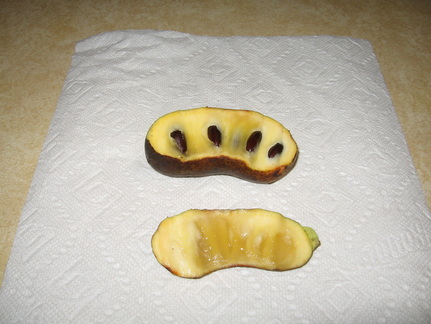
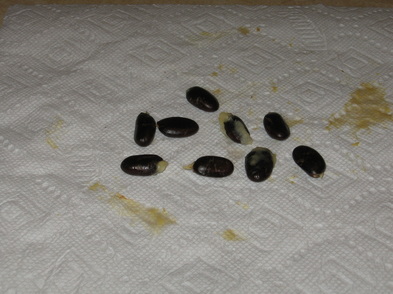
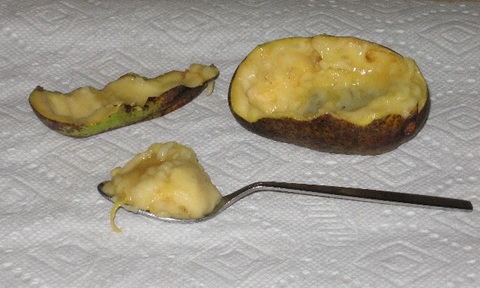
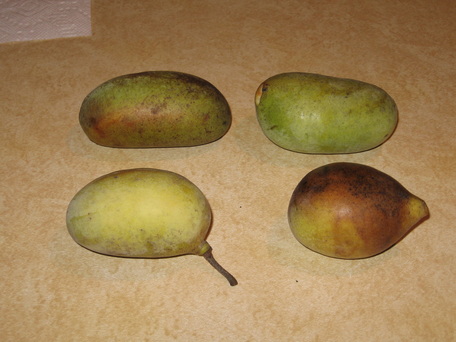
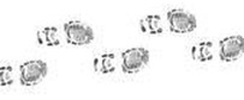
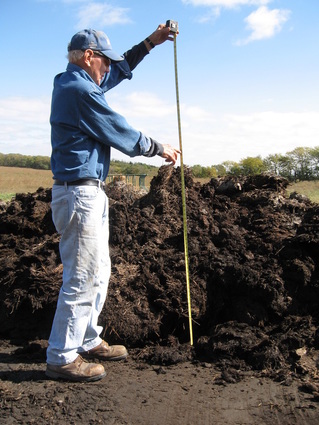
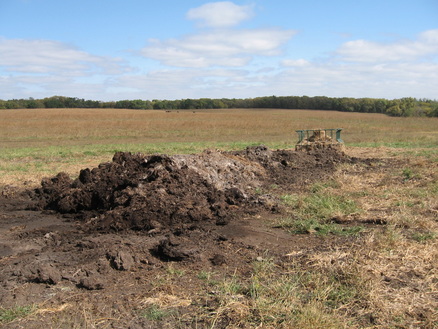
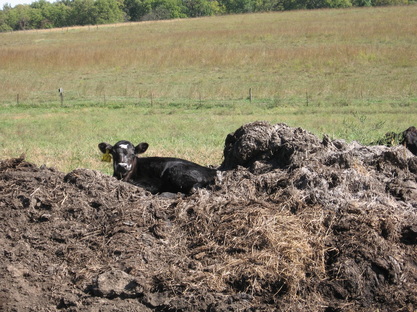
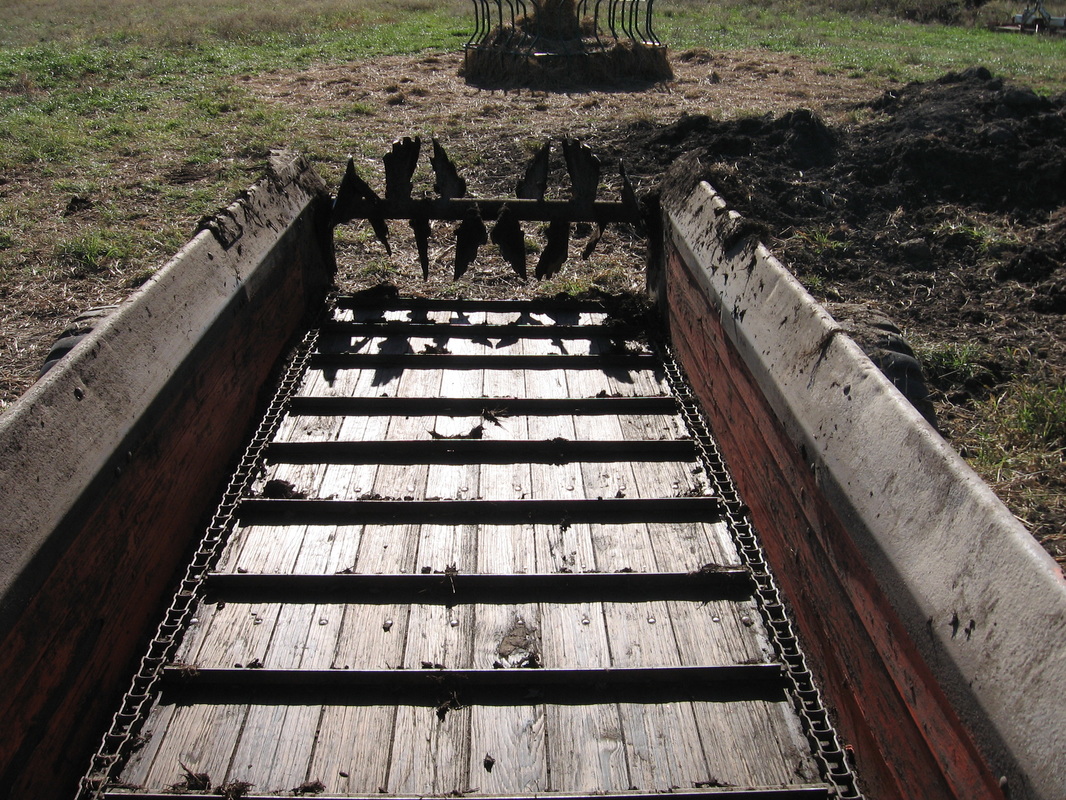
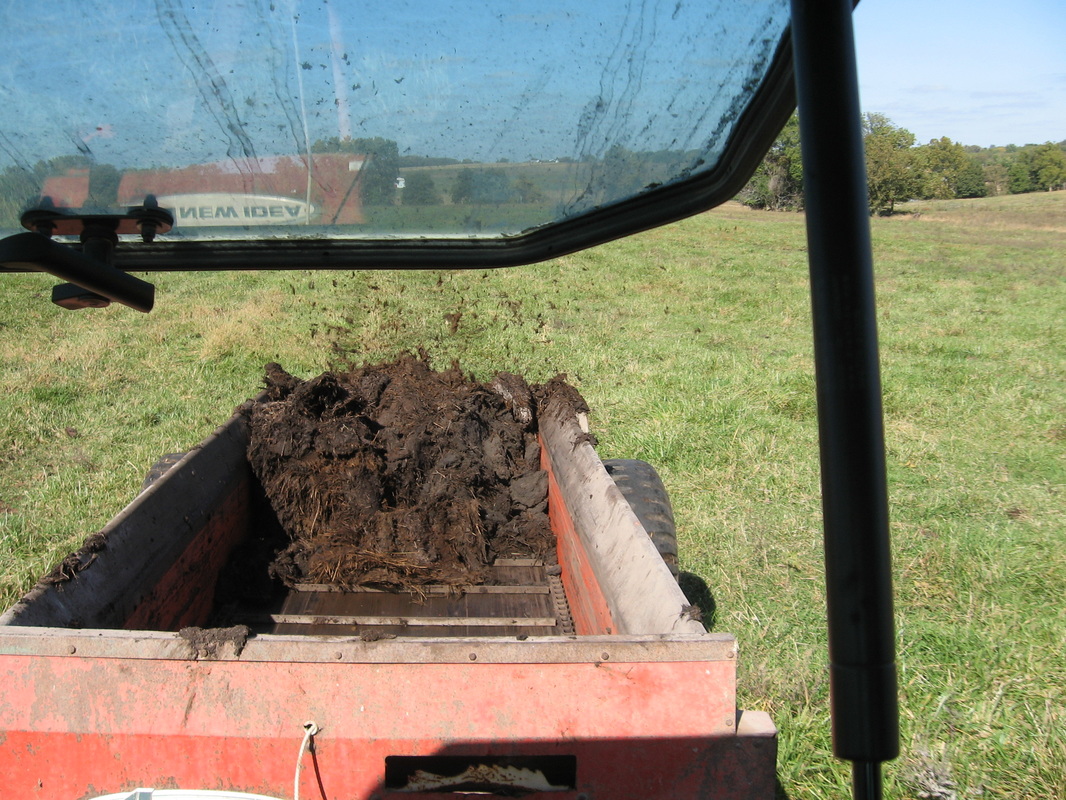
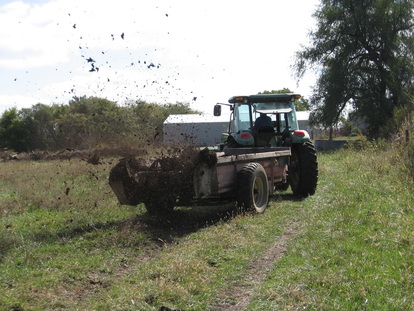
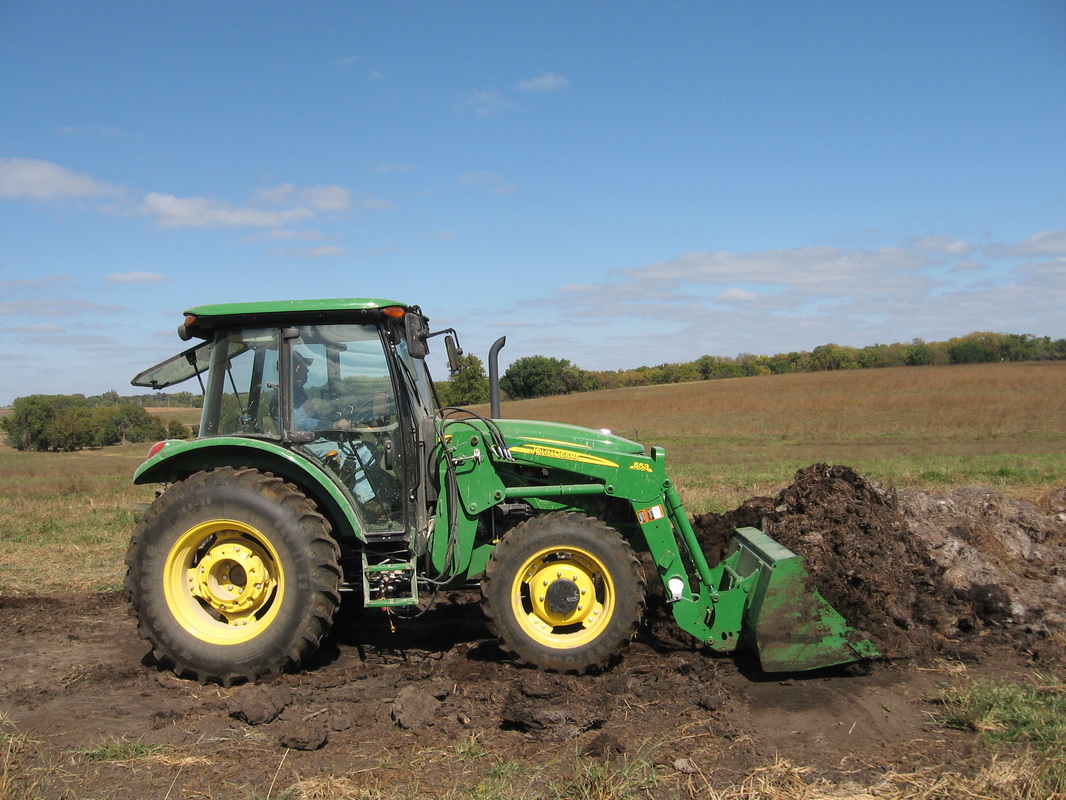
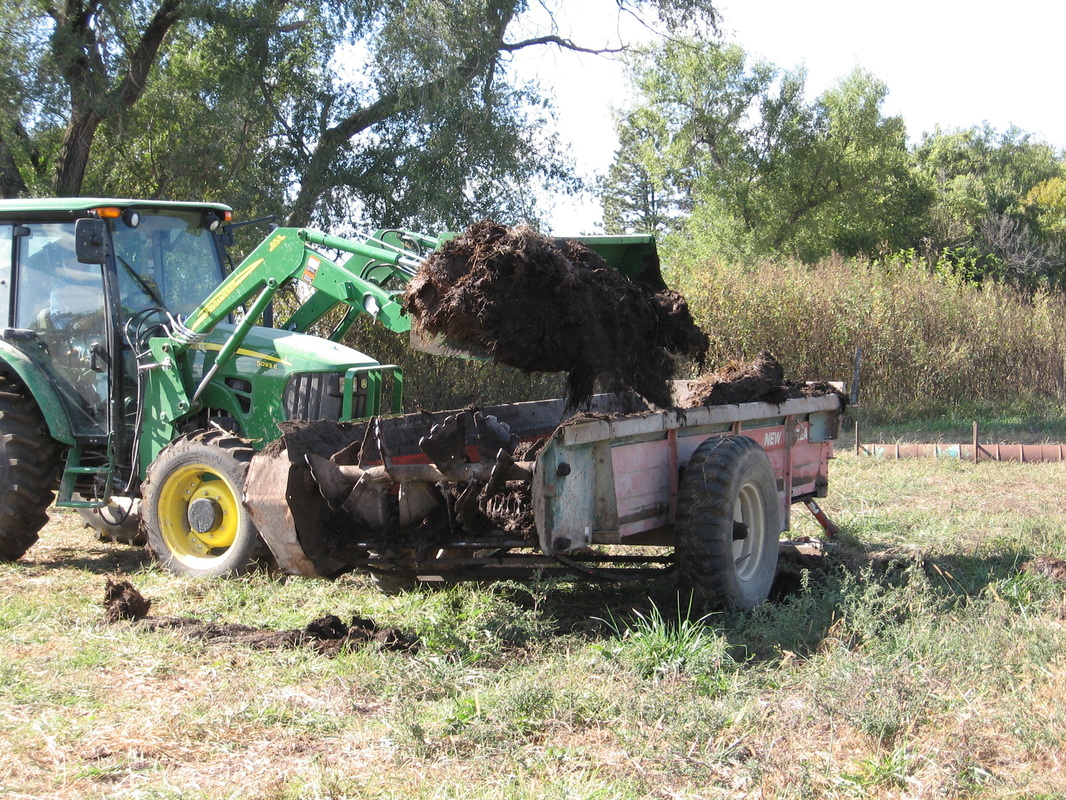
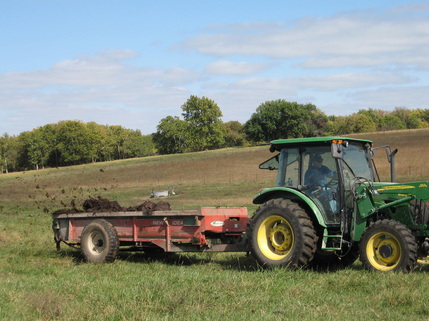
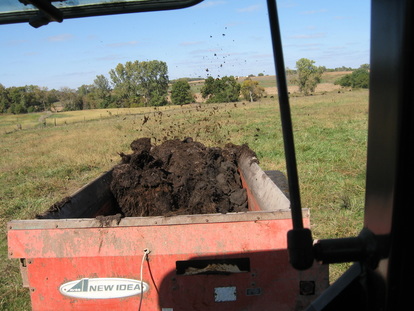
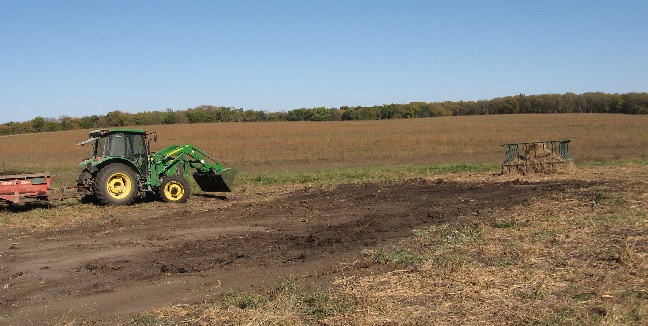

 RSS Feed
RSS Feed